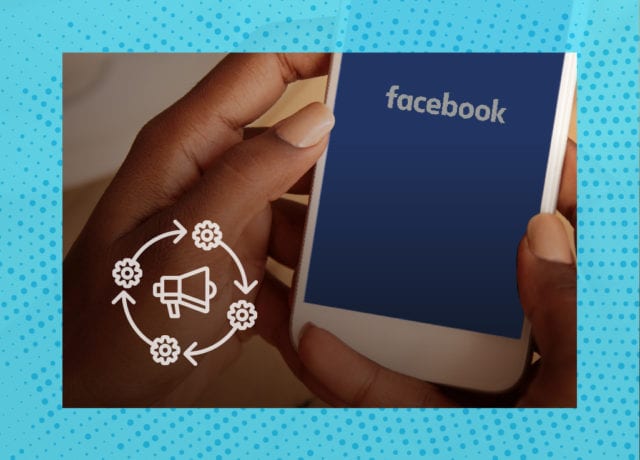Publisher, tech platform, adtech solution, media company…Whatever your take is, it’s hard to limit Facebook to one defining box.
One thing is certain: it’s massively successful at selling ads. A question we’ve been getting a lot lately is whether advertising on Facebook counts as direct buying or programmatic.
At first glance, it may seem that buying on Facebook is direct. After all, Facebook makes it incredibly easy to buy Facebook inventory directly on Facebook.
However, these ads are served programmatically.
Facebook Ads Manager acts as a unique Demand Side Platform (DSP) built for programmatic advertising. And when you look at the data, only a small portion of Facebook advertisers buy direct digital ad space anywhere else.

What makes Facebook’s DSP unique
Most DSPs buy programmatic ad inventory across thousands of websites. But they can’t buy inventory from Facebook because Facebook offers its own Ads Manager.
Facebook Ads Manager acts as a DSP because it allows advertisers to easily serve targeted, personalized ads programmatically. The main difference is that it only offers its own inventory (plus that of Instagram).
The Facebook system is designed to enable easy, highly measurable and personalized targeting for brands. The majority of brands using Facebook heavily rely on this type of advertising and do very little direct buying across other websites.
According to MediaRadar data, 17,400 companies spent $3.8B on Facebook in April. Of these brands, only 543 of them purchased direct digital ad space elsewhere. We’ll dig deeper into this data below.
Facebook ad buyers heavily rely on programmatic digital advertising. But Facebook, along with publishers and the entire adtech system, are going through major privacy changes. In the next era of privacy-forward data policies, we’ll likely see changes in how brands purchase digital advertisements.
Apple’s new update will impact Facebook and small programmatic buyers
Last month Apple rolled out the iOS 14.5 update that Facebook and other adtech players had been fretting over since its first announcement.
The big change everybody’s been obsessed with is the new privacy framework called the App Tracking Transparency (ATT). When users open an app, they’re presented with an opt-in button that asks them to allow or deny tracking across other websites or apps.
The notice reads: “Allow [app] to track your activity across other companies’ apps and websites?” Users tap “Ask App Not to Track” or “Allow.”
Facebook has opposed these changes, but has also acknowledged that digital advertising, data collection and consumer control of their privacy are evolving.
Facebook has troves of first party data and the resources to build up eCommerce functionality over the next few years. The company is guiding advertisers with the necessary actions they need to take to reduce disruptions to campaigns.
Not much of a surprise here: People prefer their privacy
The app analytics campaign Flurry has been tracking opt-in rates since the update. It doesn’t come as a big surprise that opt-in rates are low.
Two weeks after the rollout, only 4% of U.S. users said ‘yes’ to sharing their data with third-party apps and websites.
This low rate means more challenges for advertisers than just highly personalized targeting.
“It will be harder for all Facebook advertisers to associate performance with their ads, full stop,” explained Josh McClauss, vice president of marketing at performance marketing agency Metric Theory. “Facebook has already prepared advertisers for this by eliminating insights into performance beyond seven days from a click, but now they’re going to lose even more insight.”
Unless advertisers have the resources to develop more advanced modeling, they’ll have less understanding of what’s driving the most revenue for their brand.
These changes could potentially result in revenue loss for Facebook, but it will be an even bigger struggle for small brands that rely on the platform.
MediaRadar Insights
Let’s go back to the roughly 500 brands that purchased programmatically on Facebook and directly elsewhere.
These brands make up 5% of monthly spend on Facebook, which equates to $177mm in April—and they only buy programmatically on Facebook, rather than on other DSPs.
Their direct digital spend is 47% less than their investment on Facebook.
In April, top brands who purchased programmatic advertising through Facebook, but not on other digital platforms include:
- State Farm
- Tylenol
- Target
- Xfinity
- HelloFresh.
*We track advertisers on Facebook who spend at least $30k in a year
As Facebook and the digital advertising ecosystem goes through major changes, we’ll continue monitoring top spending brands and emerging trends.
For more details on Facebook advertising, read our latest Facebook advertising trend report.



